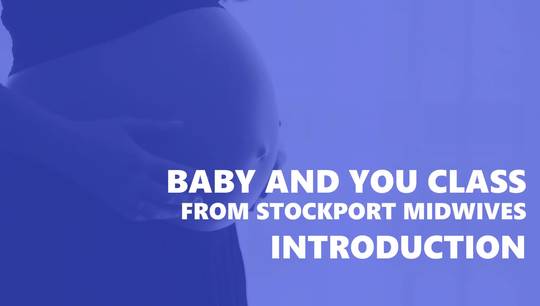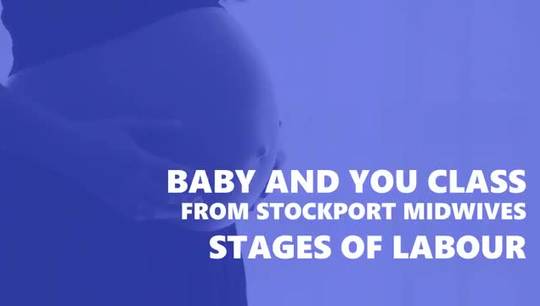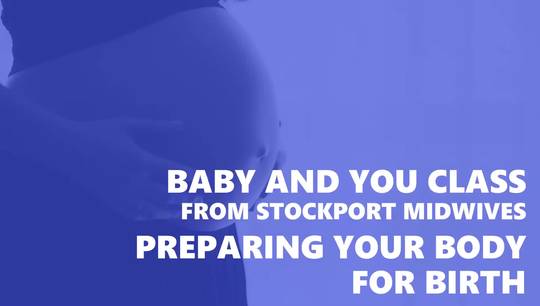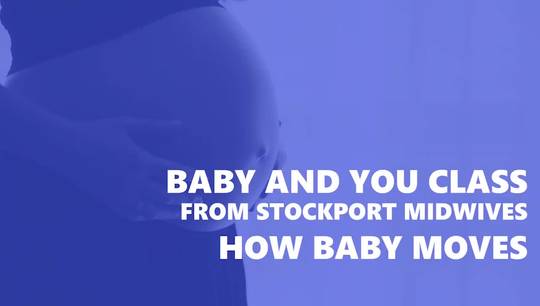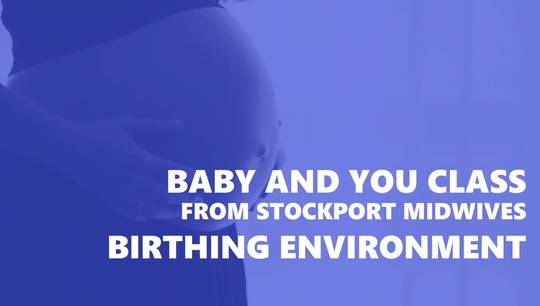Baby and You
Baby and You - Session 1 - Foetal Positioning
1,053 views
Foetal Positioning
Sam: I’m going to talk to you about optimal foetal positioning. That means getting your baby into the best position for when you go into labour and for birthing. I’ll talk to you a little about baby and then things you can do to get baby into optimal position. You may know already, from going to your antenatal appointments or talking to your midwife or other people, about the ‘back to back baby’ which basically means that your baby’s back is towards your back. Using this model here, ‘back to back’ is where your baby’s head is towards the back of your pelvis and your baby’s spine is more towards your back. Common positions are either on your left side or on your right side or sometimes your baby’s back is towards the position of your back. Naturally, if you spend a lot of your time slouching back on the sofa, a baby’s head is much heavier than the rest of its body, so gravity is going to pull the baby’s head to lower into this position. So, the best way to get your baby into a better position is to sit up right. Kim has already talked about the ball which is a great tool to get you to sit upright because it’s very hard to sit backwards on a ball, so it forces you into an upright slightly leaning forward position. The best position for your baby and for you when you go into labour is for your baby’s back to be towards your front. So, a lot of babies will either be on the left side or the right side when you go into labour. That is the best position, but it doesn’t mean that if your baby’s back is towards your back you won’t labour or birth, because some babies do come out ‘back to back’, it’s just that we want that optimal birth which hopefully means your labour is slightly shorter and a little bit easier. To get your baby with its back to your front, get on a ball and lean forward, or walk plenty, which is hard in isolation at the moment, but walk around your garden or the house or walk up and down the stairs. When I was pregnant, my midwife told me to clean my skirting boards because being on your hands and knees is a great position to get your baby into that optimal position. What we do in your antenatal appointments to assess the position of your baby is feel your tummy. Your midwife might say the baby has slipped back to back because she can feel the little limbs at the front. So you might feel a little gap where your belly button is because that’s where the baby’s tummy is when your baby is back to back. If your baby is in a position with her back to your front, then what we can feel is the bottom and the back, either on the left side or the right side. There are lots of things you can do to get your baby into this optimum position. A really good resource for finding different positions to get into is called Spinning Babies. If you go to Spinning Babies website, they will give you other tips or positions so that you are optimising your baby’s position for labour and birth. They include kneeling on a sofa and putting your head down and lying sideways and dropping your pelvis. It’s just to give the baby the opportunity to get into a better position. From a labour point of view, the better your baby’s head is placed on your cervix, the quicker your labour will progress, but do not worry if you start labour with your baby in a back to back position because you will labour. The process of labour is not just about opening your cervix but to get your baby into an optimal position.
Kim: It’s really worth noting that, actually we have a theory, that babies know best. They know the position they need to get in to come through the birth canal depending on the shape of your pelvis and your pelvic floor. The first baby I saw being born as student was a home birth and that baby was born facing upwards and her previous child had done exactly the same so her babies new that that was the right position for them. So, don’t be concerned of it’s picked up in your labour that the baby is back to back, as Sam said, babies know what they need to do. I just want to talk to you about the uterus and the cervix, you may have heard it called the neck of the womb, just to give you a better understanding of the role of that. You might be able to see my diagram there. You can see the uterus is like a big blown up balloon. That’s a powerful bag of muscles and that’s all the uterus is. The bottom of the uterus is the cervix or neck of the womb. If you imagine in pregnancy the role of the cervix and the lower segment of your uterus is actually keeping your baby in so those muscles will be firm and taut in order to prevent you from having a premature birth. The top of the uterus has to stay thin and soft and supple in order for your baby to grow and the uterus to expand. We don’t know why women go into labour, it’s one of life’s wonderful mysteries and midwives will probably want to keep it that way to keep us on our toes, but what we know is that the two actions change during labour. All of a sudden, the lower segment of the uterus and the cervix has to start to thin out in length and start to dilate so we call it defacement which is the thinning out part, and then dilatation, which you probably will have heard of. You may have heard of 5 or 10 centimetres dilated. All that means is that, if you were to have a vaginal examination, we could tell how many centimetres dilated you are. Or, if the cervix was fully dilated, we wouldn’t be able to feel any of the cervix around the baby’s head. So, in order for you to do this, your birth hormones need to be released and that’s exactly what’s happening. This lower part is suddenly becoming softer and opening and with each surge or contraction that you have it’s almost like the muscles are gathering themselves up and at the end of your birth, at the point where you want to bear down and push your baby out, you’ve actually got a thick bound of muscle at the top of the uterus. So, it’s cleverly bound up all those muscles, and the thick bound of muscles will help you to expel or push your baby out. The body knows exactly what it’s doing as long as we don’t disturb the birth too much then the body can do what it needs to do. Just relating that back to what Sam said about the baby’s position, what we know about our babies is if the baby is in that frontal arterial position, it’s the smallest part of the baby’s head that’s going to press on the cervix, an even fit, and if baby is back to back often they’re a little bit deflexed and it’s a slightly bigger portion of the baby’s head that sits on the cervix. Sometimes, because it’s not an even fit, the feedback message to the brain, in order to make more surges or contractions isn’t always as strong. So, if we’ve got our baby in a frontal position we know we’ve got that even pressure on the neck of the womb. It’s actually called the Fergusson Reflex and is a feedback message to the brain saying make more birth hormones. It’s just worth noting that within your uterus, you’ve got your baby, you’ve got your placenta stuck to the side of your uterus, and then you’ve got two membranes that go around all of this and that’s a protective factor and helps to prevent lots of infections.
